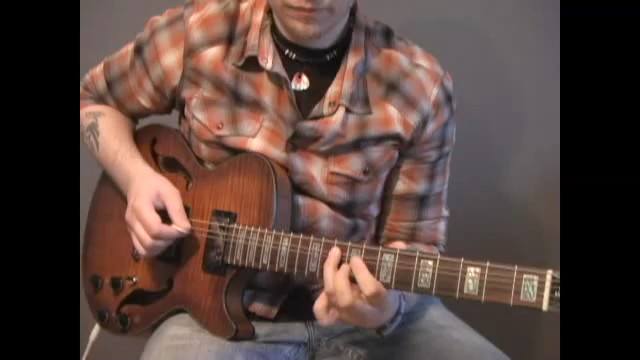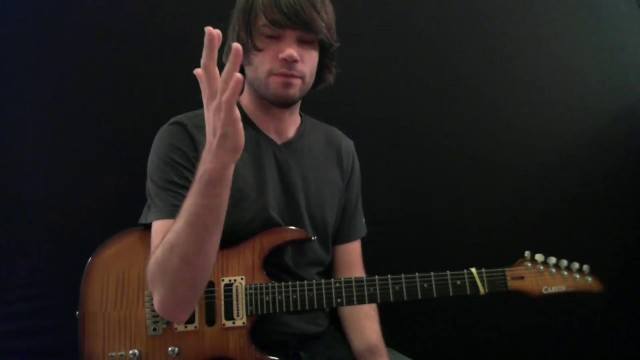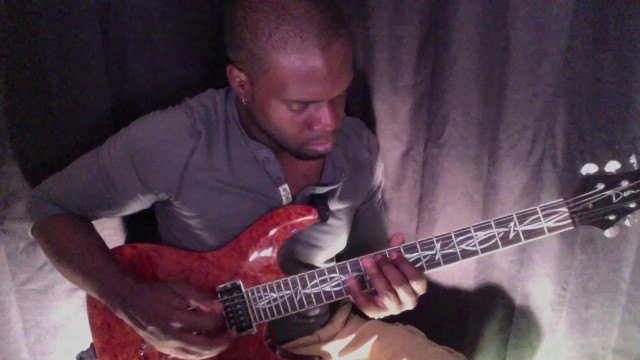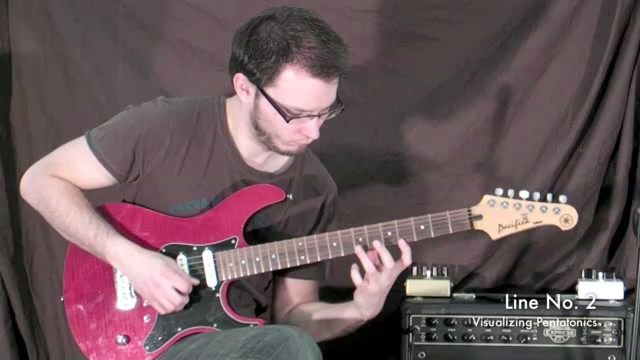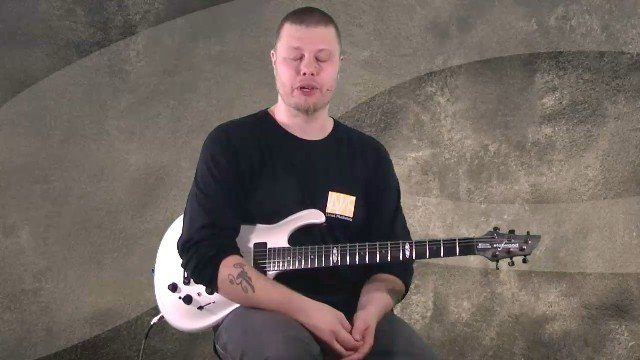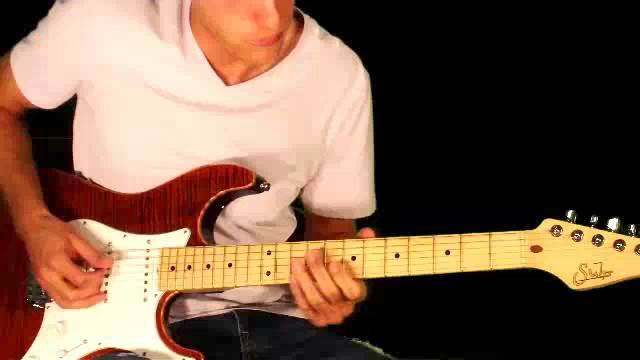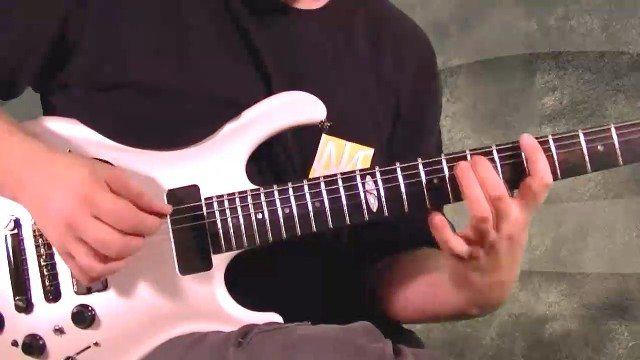So, by now you should have the concept in firm grasp and be ready to venture out on your own, picking and choosing intervals to practise in the change. Below I have provided you with a more advanced "hybrid" Blues scale, combining the Blues scale with the Dorian mode, BUT (important to note) keeping the POSITION within the boxes. We are still making the blues boxes our starting point, but just "coloring" these boxes after our own taste.
Seeing how we are playing over a m9 chord, the 2nd degree is a given to use, and but also the 6th as discussed earlier. Now you start to see just how many notes these two keys have in common. Usually a note to target in the change is never more than a half step away. Using chromatics is thus another excellent tool to highlight the change and create tension and realese in your lines.
The next step is naturally to continue this exercise through many "ranges" on the fret board, in as many keys as you want. However, my suggestion is that you continue to use this range to begin with, but change keys. Lets for example say that you stay within this 9th-14th fret range, but want to play over Gm-Bbm. Then your boxes of choice would have to be the 4th box for Gm, and the 3rd Box for Bbm.
Continue to practise like this, and eventually start to improvise freely across the entire fretboard, targeting the change, but STAYING within the range as the change comes. For example, let's say that you are in Dm, and when the change to Fm approaches you are down around the 5th fret, in the 4th Box. Then you'd have to stay there, finding the appropriate box for F, that being the 3rd of course.
This concept can be used for hours of fun. =) So get cracking, and feel free to record some improvisations over the accompanying backing track to post in the forum!



















